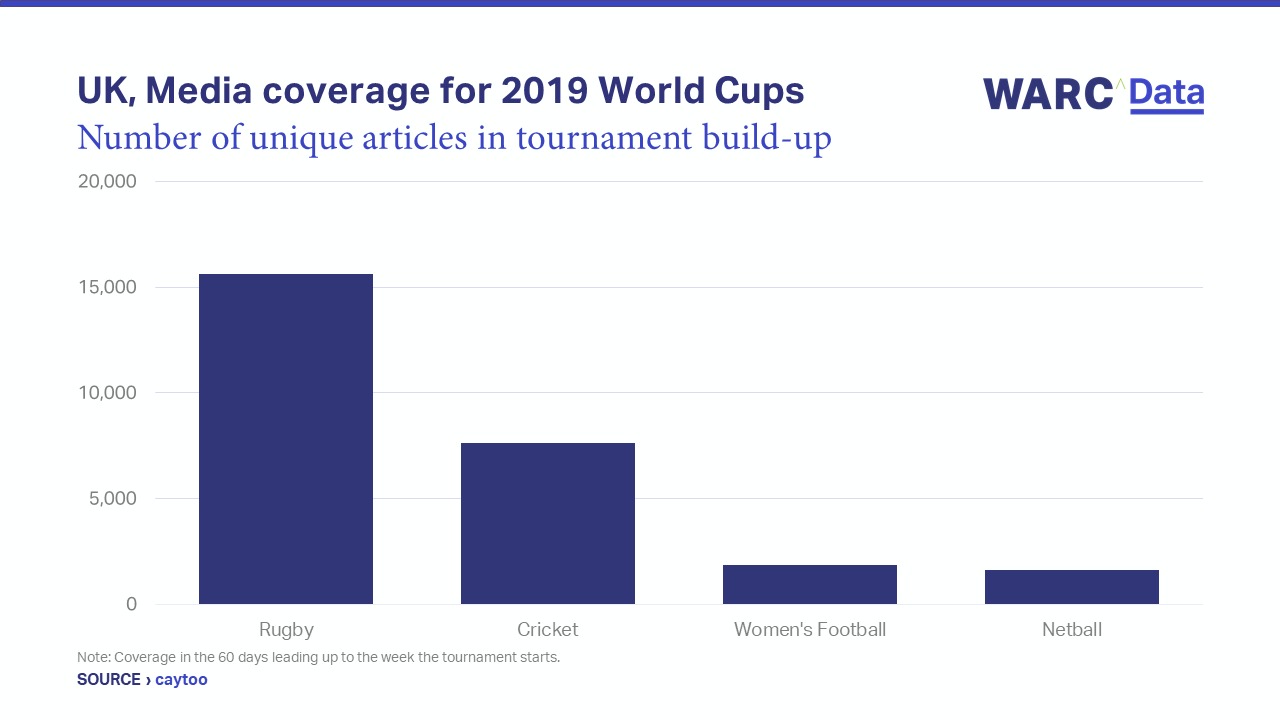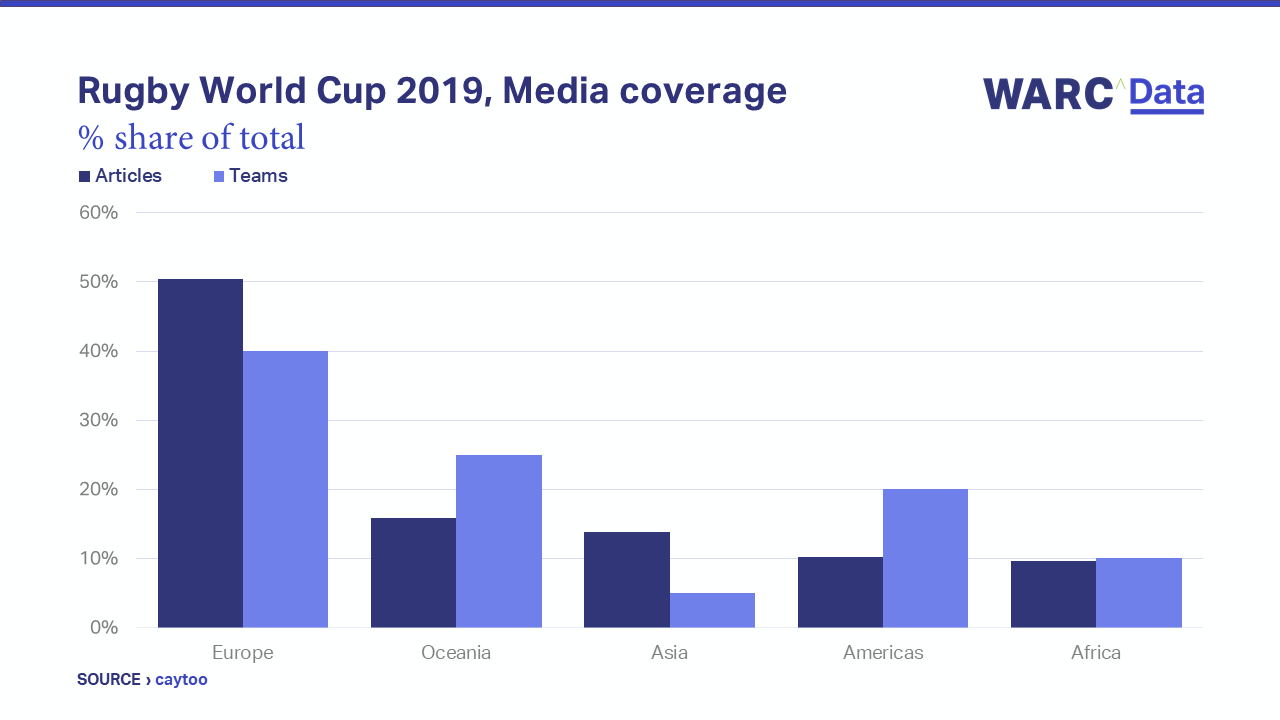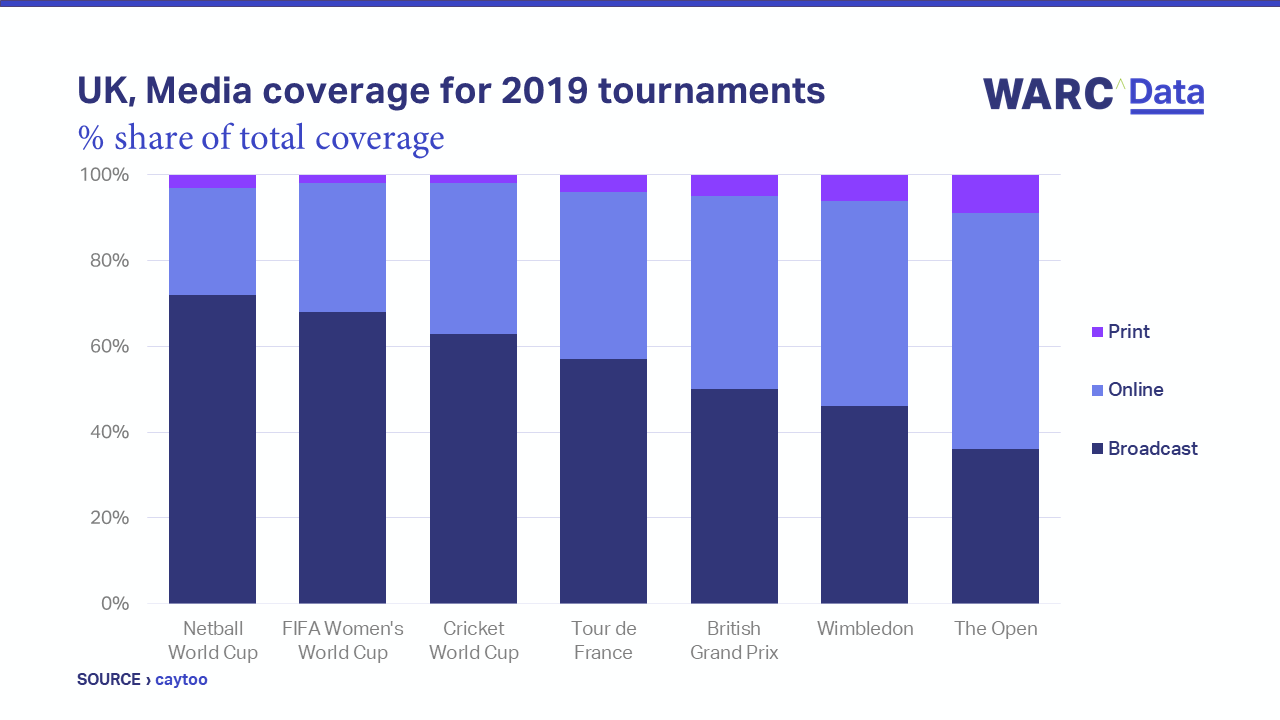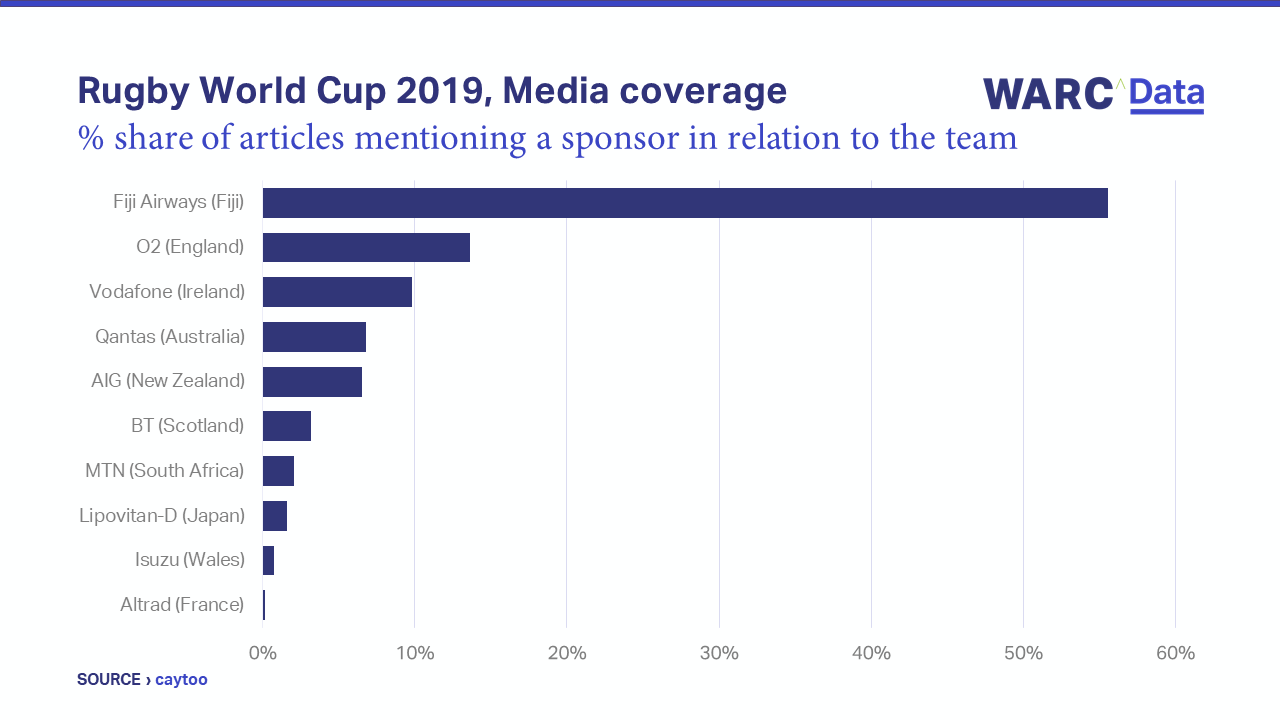With the Rugby World Cup about to kick off in Japan, Alex Burmaster of sports marketing platform caytoo crunches the numbers around sponsors and media coverage.
Sponsors
The strong traditional and well-defined perception of rugby fans is borne out by the fact that just three sectors account for 75% of the 20 RWC teams’ main sponsors.
Financial services and telecommunications lead the way with five each. The former speaks to the affluent nature of rugby fans, including an investment brand, a bank, a couple of insurance firms and VISA.
It’s interesting to see how strongly major telecoms brands regard rugby as a vehicle to reach consumers, particularly that three such fierce competitors in the UK – O2, Vodafone and BT – each sponsor one of the 'home' nations. The competition off the pitch for share of voice among these sponsors is likely to be as fierce as that between the teams on it; both groups have a lot riding on this.
The UK’s telecoms brands are also joined by MTM, one of South Africa's biggest in the space, while the Uruguay team are sponsored by the government-owned carrier Antel.

An altogether different type of carrier also goes big on rugby: airlines are represented by Qantas (Australia), Fiji Airways (Fiji) and Aeroflot (Russia) – which again speaks to the desirable nature of rugby fans in terms of consumer spending, be it on leisure or business travel.
Media coverage
• Ahead of the event
When looking at the media coverage in the build-up to the tournament, rugby has generated far more media coverage in the UK in the 60 days leading up to the week the tournament starts than the other three world cups this summer.

It’s generated twice as many articles as the Cricket World Cup, particularly impressive considering the latter was on home soil, which is usually conducive to generating more coverage.
This could be down to the higher interest in rugby in the UK where the biggest international matches have always remained on terrestrial TV, via the BBC and ITV. Cricket has suffered in popularity since the game moved entirely to pay TV through Sky in 2005 which has included all major tournaments including the 2019 iteration (although Sky allowed Channel 4 to co-broadcast the final under public pressure).
It’s very unlikely that England would have won the Cricket World Cup without Sky’s huge investment over the last 15 years. However, this has come at a price: the complete absence of the men’s professional sport from terrestrial TV over this period has meant a significant decrease in general public interest. Yes, it had a moment in the sun with the final on Channel 4 but it’s going to require steady sustained exposure on national TV to reverse this malaise.
The relatively low showing for the women’s football and netball world cups, particularly the former, shows that despite the huge strides being made in the development of women’s sport, the reality is there’s a long, long way to go in achieving any sort of parity with the men’s game.
• By region
Twenty teams are participating across the five regions represented. Europe is generating most of the media coverage (50%) but does account for 40% of the teams.

In contrast, Oceania accounts for 25% of the teams but just 16% of the coverage; this under-indexing is due to the fact Oceania representatives include the smallest countries participating, the Pacific islands of Fiji, Tonga and Samoa.
Asia is the region most-over indexing on the share of coverage (14%) in relation to the share of teams (5%). This is not surprising due to its sole representative being the host country Japan, which also shows how much the media in the country is getting behind the event.
The Americas is the region most under-indexing (10% of articles but 20% of teams) which reflects the sport’s relatively low popularity in that region, where the likes of football in South America and domestic US sports dominate both the fan and media agendas.
• By type
In the build-up to the tournament, coverage is dominated by online publications (accounting for 59% of articles). However, it will be interesting to see if this changes once the tournament is underway. As the graph below shows (admittedly it’s UK only), broadcast tends to dominate when coverage during the tournament itself is factored in.

New Zealand and Ireland publications dominate the individual publications with the greatest appetite for covering the tournament (3 of the top 10 are Irish radio stations alone), reflecting the huge popularity of rugby in those countries.
However, it’s not surprising to see a publication from the host country leading the way (the Japan Times), as host country publications are likely to cover the tournament from a much wider angle than just the playing side to areas like the wider impact on the country.
• Sponsor mentions
caytoo analysed the top 10 ranked teams in the world in terms of the number of media articles mentioning a sponsor in relation to the team.

Fiji Airways dominates the top ten, with a 55% share of articles that mention a sponsor in relation to the team. This is down to the fact the airline has naming rights to the team itself, who are officially known as Fiji Airways Flying Fijians (or short Flying Fijians). Domestic publications in Fiji almost always refer to the team in this manner.
This honouring of citing the naming rights sponsor by the Fijian media is likely to pique the jealousy of sponsors in the west who naturally get frustrated when media outlets don't mention the naming rights brand. For example, for the recent Vitality Netball World Cup, broadcast outlets only mentioned Vitality 0.1% of the time, whilst print outlets only did so 12% of the time.
For many of the other teams, however, sponsor mentions in relation to the team are concentrated around the launch of new campaigns. For example, insurance brand AIG teamed up with the All Blacks on a campaign about how not to drive in Japan.

